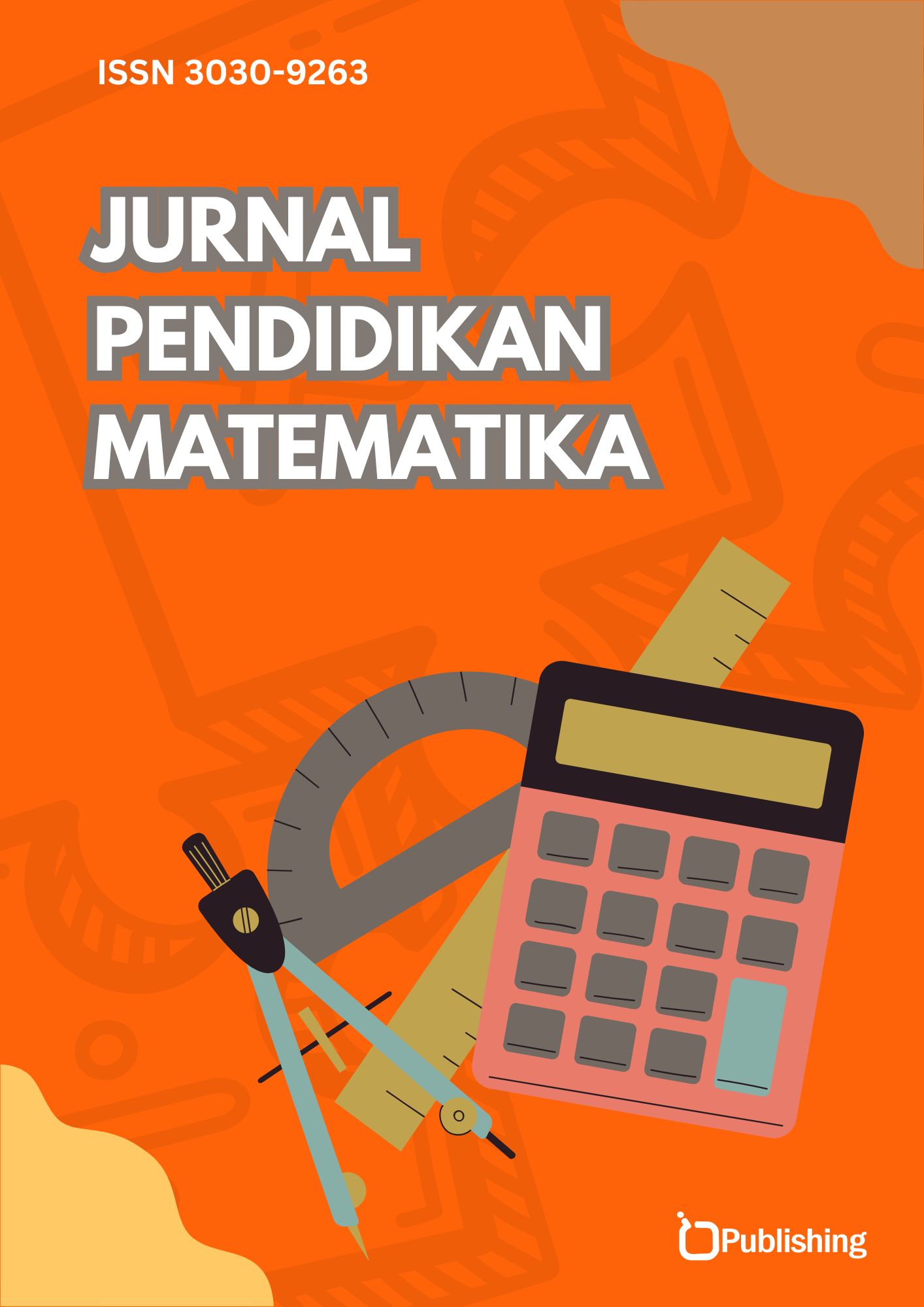Klasifikasi Besar Potensi Kemunculan Batu Ginjal Menggunakan Fuzzy Inference System (FIS) Metode Mamdani
DOI:
https://doi.org/10.47134/ppm.v1i1.110Keywords:
modernization, fuzzy inference system, mamdani methodAbstract
The phenomenon of modernization that arises in the lives of society has an impact on unhealthy lifestyles. This has led to an increased prevalence of kidney stone disease in recent decades. In this study, a fuzzy inference system will be developed using the Mamdani method for the classification of the large potential occurrence of kidney stones based on urine conditions. The input variables used are urine pH, urea content in urine, and calcium content in urine, while the output variable used is the magnitude of the potential occurrence of kidney stones. The variables included in the fuzzy set are formed by combinations of each variable with its respective linguistic terms. These fuzzy sets are then processed with the help of Matlab software to produce a classification result indicating small or large potential. The classification results from the developed fuzzy inference system provide accurate classifications for users with an accuracy level of 94%. Thus, in general, this fuzzy system can be used to assist in classifying the large potential occurrence of kidney stones, thereby minimizing the number of individuals suffering from this disease as much as possible.
References
Andrews, D. F., & Herzberg. (n.d.). Urine Analysis Data. Retrieved November 18, 2023, from https://vincentarelbundock.github.io/Rdatasets/doc/boot/urine.html
Fointuna, D. W. (2021). Applying Mamdani’s method to categorize mathematical literacy of public middle school students in Kupang. Journal of Physics: Conference Series, 1957(1). https://doi.org/10.1088/1742-6596/1957/1/012009 DOI: https://doi.org/10.1088/1742-6596/1957/1/012009
Ilbahar, E. (2018). A novel approach to risk assessment for occupational health and safety using Pythagorean fuzzy AHP & fuzzy inference system. Safety Science, 103, 124–136. https://doi.org/10.1016/j.ssci.2017.10.025 DOI: https://doi.org/10.1016/j.ssci.2017.10.025
Jepri, J. (2019). Pengembangan Sistem Pakar Diagnosis Penyakit Ginjal Kronik Menggunakan Metode FIS - Sugeno. STRING (Satuan Tulisan Ris. dan Inov. Teknol., 3(3), 258. https://doi.org/10.30998/string.v3i3.3583 DOI: https://doi.org/10.30998/string.v3i3.3583
Jain, N. (2020). Sustainable supplier selection under must-be criteria through Fuzzy inference system. Journal of Cleaner Production, 248. https://doi.org/10.1016/j.jclepro.2019.119275 DOI: https://doi.org/10.1016/j.jclepro.2019.119275
Jamalinia, H. (2018). An innovative and improved mamdani inference (IMI) method. Lecture Notes in Computer Science (Including Subseries Lecture Notes in Artificial Intelligence and Lecture Notes in Bioinformatics, 11288, 413–422. https://doi.org/10.1007/978-3-030-04491-6_32 DOI: https://doi.org/10.1007/978-3-030-04491-6_32
Karaboga, D. (2019). Adaptive network based fuzzy inference system (ANFIS) training approaches: a comprehensive survey. Artificial Intelligence Review, 52(4), 2263–2293. https://doi.org/10.1007/s10462-017-9610-2 DOI: https://doi.org/10.1007/s10462-017-9610-2
Wang, L. X. (1997). A Course in Fuzzy Systems and Control.
Li, C. (2018). Analysis and Design of Functionally Weighted Single-Input-Rule-Modules Connected Fuzzy Inference Systems. IEEE Transactions on Fuzzy Systems, 26(1), 56–71. https://doi.org/10.1109/TFUZZ.2016.2637369 DOI: https://doi.org/10.1109/TFUZZ.2016.2637369
Lubis, A. J. (2019). Pool Water Acidity Gauge Using Fuzzy Mamdani Method. Journal of Physics: Conference Series, 1361(1). https://doi.org/10.1088/1742-6596/1361/1/012083 DOI: https://doi.org/10.1088/1742-6596/1361/1/012083
Moedjiono, S. (2019). Critical Server Determination using Fuzzy Mamdani and Fuzzy Sugeno Methods. Proceedings of 2019 4th International Conference on Informatics and Computing, ICIC 2019. https://doi.org/10.1109/ICIC47613.2019.8985964 DOI: https://doi.org/10.1109/ICIC47613.2019.8985964
Nazari, S. (2018). A fuzzy inference- fuzzy analytic hierarchy process-based clinical decision support system for diagnosis of heart diseases. Expert Systems with Applications, 95, 261–271. https://doi.org/10.1016/j.eswa.2017.11.001 DOI: https://doi.org/10.1016/j.eswa.2017.11.001
Pourjavad, E. (2018). The Application of Mamdani Fuzzy Inference System in Evaluating Green Supply Chain Management Performance. International Journal of Fuzzy Systems, 20(3), 901–912. https://doi.org/10.1007/s40815-017-0378-y DOI: https://doi.org/10.1007/s40815-017-0378-y
Pujiharsono, H. (2023a). Implementation of fuzzy logic for students selection process of the MBKM program. AIP Conference Proceedings, 2480. https://doi.org/10.1063/5.0103485
Pujiharsono, H. (2023b). Implementation of fuzzy logic for students selection process of the MBKM program. AIP Conference Proceedings, 2480. https://doi.org/10.1063/5.0103485 DOI: https://doi.org/10.1063/5.0103485
Rejeesh, M. (2019). Interest point based face recognition using adaptive neuro fuzzy inference system. Multimedia Tools and Applications, 78(16), 22691–22710. https://doi.org/10.1007/s11042-019-7577-5 DOI: https://doi.org/10.1007/s11042-019-7577-5
Saiful Anwar Ziani Said, M. I. D. (2023). Fuzzy Technology Design for Early Detection of Diseases in Tobacco Plants. International Journal of Health and Information System, 1(1), 27–39. https://doi.org/10.47134/ijhis.v1i1.8 DOI: https://doi.org/10.47134/ijhis.v1i1.8
Santosa, I. (2018). Expert System Diagnosis of Cataract Eyes Using Fuzzy Mamdani Method. Journal of Physics: Conference Series, 953(1). https://doi.org/10.1088/1742-6596/953/1/012138 DOI: https://doi.org/10.1088/1742-6596/953/1/012138
Shihabudheen, K. V. (2018a). Recent advances in neuro-fuzzy system: A survey. Knowledge-Based Systems, 152, 136–162. https://doi.org/10.1016/j.knosys.2018.04.014
Shihabudheen, K. V. (2018b). Recent advances in neuro-fuzzy system: A survey. Knowledge-Based Systems, 152, 136–162. https://doi.org/10.1016/j.knosys.2018.04.014 DOI: https://doi.org/10.1016/j.knosys.2018.04.014
Sinuk, V. G. (2020). Inference methods for mamdani-type systems based on fuzzy truth value. CEUR Workshop Proceedings, 2648, 169–180.
Sinuk, V. G. (2023). The Inference Method for a Mamdani Type System with Nonsingleton Fuzzification. Pattern Recognition and Image Analysis, 33(3), 506–510. https://doi.org/10.1134/S1054661823030422 DOI: https://doi.org/10.1134/S1054661823030422
Sunjana. (2019). Prediction of production using the fuzzy mamdani inference method. International Journal of Advanced Science and Technology, 28(6), 136–139.
Alelign, T., & Petros, B. (2018). Kidney Stone Disease: An Update on Current Concepts. Adv. Urol., 2018. https://doi.org/10.1155/2018/3068365 DOI: https://doi.org/10.1155/2018/3068365
Tito Prabowo Imam Machfud, D. L. (2022). Penerapan Fuzzy – Service Quality Terhadap Tingkat Kepuasan Pelayanan BPJS Ketenagakerjaan. Journal Automation Computer Information System, 2(1), 82–90. https://doi.org/10.47134/jacis.v2i1.38 DOI: https://doi.org/10.47134/jacis.v2i1.38
Wang, L. X. (1997). A Course in Fuzzy Systems and Control.
Wawan, W. (2021). Optimization of National Rice Production with Fuzzy Logic Using Mamdani Method. Journal of Multidisciplinary Applied Natural Science, 1(1), 36–43. https://doi.org/10.47352/jmans.v1i1.3 DOI: https://doi.org/10.47352/jmans.v1i1.3
Zulfikar, W. B. (2018). Implementation of Mamdani Fuzzy Method in Employee Promotion System. IOP Conference Series: Materials Science and Engineering, 288(1). https://doi.org/10.1088/1757-899X/288/1/012147 DOI: https://doi.org/10.1088/1757-899X/288/1/012147
Downloads
Published
How to Cite
Issue
Section
License
Copyright (c) 2023 Nadiya Azhar Mufid

This work is licensed under a Creative Commons Attribution 4.0 International License.










